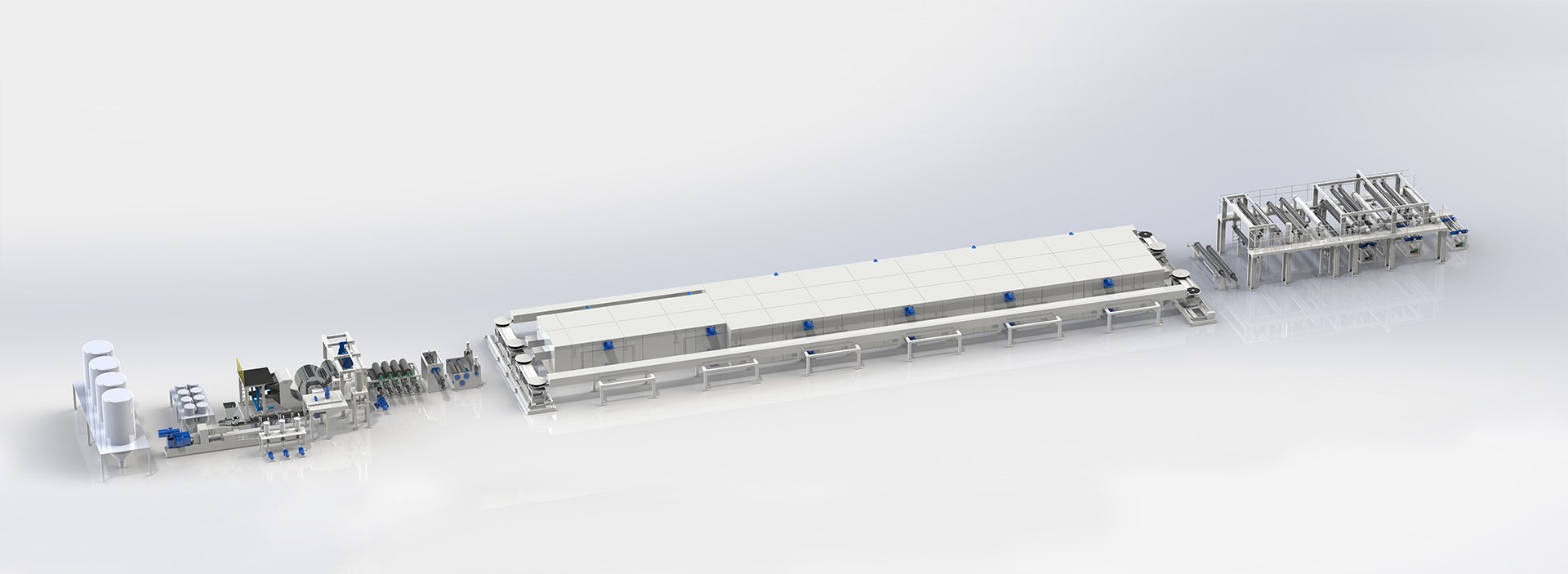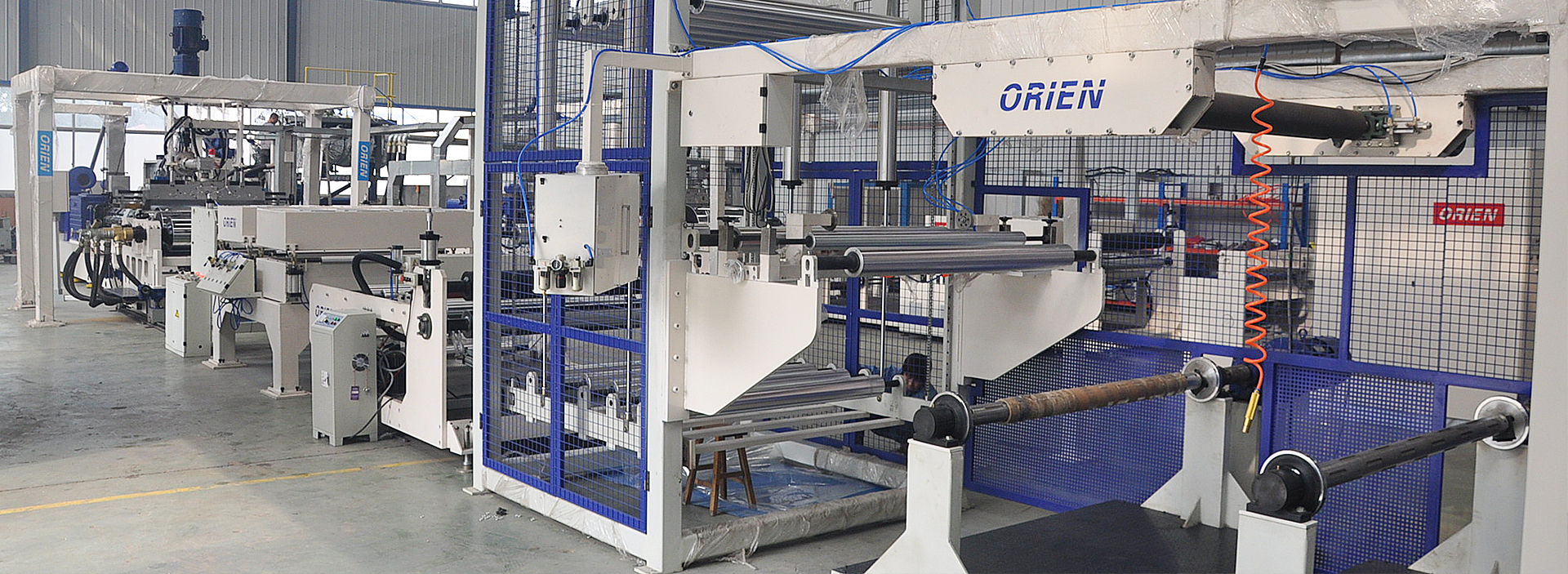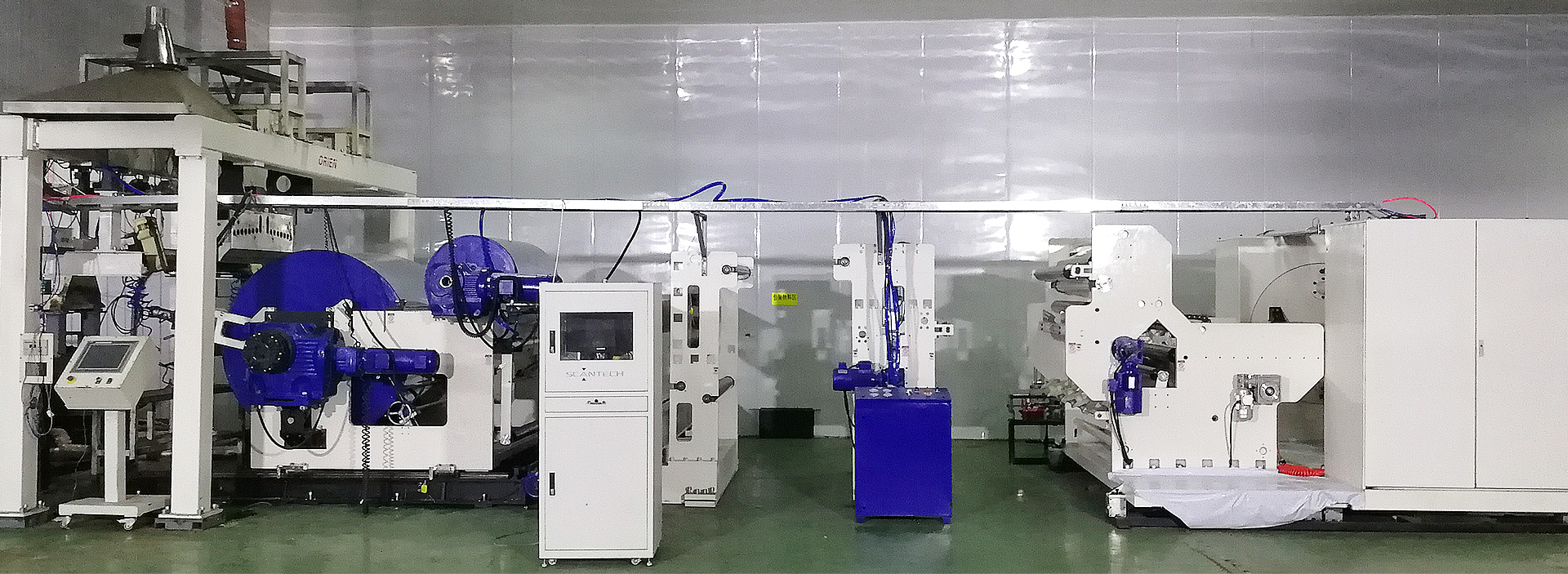Lithium battery separator production line
Lithium battery separator production line
Lithium battery separator production line:
Lithium battery separator production lines are mainly divided into three categories:
Dry unidirectional stretching diaphragm production line;
Dry biaxially oriented diaphragm production line;
Wet biaxially oriented diaphragm production line;
Dry uniaxial stretching diaphragm production line
The dry uniaxial stretching process uses PP or PE as a main raw material to prepare a highly crystalline polypropylene or polyethylene film having low crystallinity, and is annealed at a high temperature to obtain an oriented film having high crystallinity. The film is first stretched at a low temperature to form micro defects, and then the defects are pulled apart at a high temperature to form micropores. The separator produced by this method has a flat long microporous structure, and since the uniaxial stretching is performed only, the transverse strength of the separator is relatively poor, but it is because there is no transverse stretching, and there is almost no heat shrinkage in the transverse direction. It mainly produces lithium ion battery separators with different thicknesses ranging from 16μm to 40μm.
Dry biaxially oriented diaphragm production line
The dry biaxial stretching process is carried out by adding a nucleating β crystal modifier in polypropylene, utilizing the difference in density between different phases of polypropylene, and forming a microporous shape during stretching to form micropores for Production of single-layer PP film, mainly produces lithium ion battery separators with different thicknesses from 12μm to 40μm.
Wet biaxially oriented diaphragm production line
The wet method is also called phase separation method or thermal phase separation method, and a high boiling hydrocarbon liquid or a low molecular weight substance is mixed with a polyolefin resin, the mixture is heated and melted, and the melt is spread on a sheet, and then phase separation is performed by cooling. The sheet is then oriented in a longitudinal or biaxial direction and finally the liquid is extracted with a volatile solvent. It is possible to prepare microporous membrane materials which are interpenetrated and are suitable for a wide range of materials. The separator produced by the wet biaxial stretching method has high longitudinal and transverse strength due to the biaxial stretching. At present, it is mainly used for single-layer PE separators, mainly producing lithium ion battery separators with different thicknesses ranging from 8μm to 25μm. The wet method can make relatively thin diaphragms, and has high controllability in terms of porosity and pore size uniformity in the preparation process, and has become the main development direction at present.
Our battery separator production line equipment features:
1. Batching system: Compared with the traditional mixed liquid feeding method, the distributed feeding method has significant improvement in the uniformity of mixing, the accuracy of feeding and the degree of automation;
2, extrusion system: the use of independent core twin-screw technology, high output, mixed plasticization effect;
2. Cooling crystallization: matching the drawing process to select the crystallization temperature of the cast piece to be formed by rolling;
3, stretching method: master the key technology of synchronous stretching, two-way synchronous stretching rate 3.75-47.85mm2 *mm2/s
4. Solvent extraction: The extraction tank adopts full-active and special drive of the upper and lower rollers. It is fully sealed and leak-free. It can control multi-stage liquid injection and ultrasonic cleaning to achieve the minimum amount of liquid and reduce cost.
5, stereotypes: tension controllable heat setting to ensure horizontal and vertical heat shrinkage
6, online slitting and winding: online product word winding and separate large volume;
7. Low tension extension: The contact roller can be active, passive or switched. Available in either center or surface drive for different film types.



